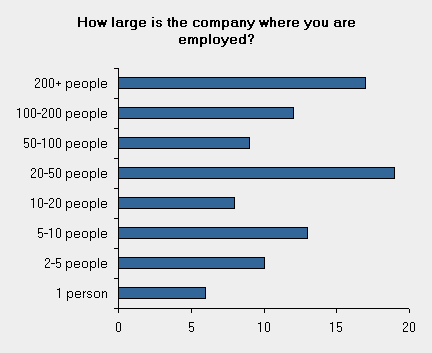Over 10 million people use AutoCAD globally. This software is popular among architects, engineers, and designers.
AutoCAD, developed by Autodesk, is a leading computer-aided design (CAD) software. It enables professionals to create precise 2D and 3D drawings. Its user-friendly interface and robust features make it a top choice in various industries. AutoCAD supports a wide range of applications, from architectural blueprints to mechanical engineering designs.
It also offers powerful tools for editing and annotating drawings. Users can collaborate and share their work easily. AutoCAD’s extensive library of templates and plugins enhances productivity. This software continually evolves, incorporating new technologies to stay ahead in the market. Its versatility and reliability make it indispensable for many professionals.

Credit: www.designmaster.biz
Introduction To Autocad
AutoCAD is a popular design and drafting software. It is used by professionals worldwide. Many industries rely on it for precise drawings and models. This section introduces you to AutoCAD.
Brief History
AutoCAD was first released in 1982 by Autodesk. It was one of the first CAD programs for PCs. Initially, it ran on microcomputers with internal graphics controllers. Over the years, it has evolved significantly. Today, it supports both 2D and 3D designs. It remains a leader in the CAD industry.
Core Features
AutoCAD offers a range of powerful features. Here are some key features:
- 2D Drafting: Create detailed 2D drawings with ease.
- 3D Modeling: Design complex 3D models with advanced tools.
- Customization: Tailor the interface and commands to your needs.
- Collaboration: Share and work on designs with others effortlessly.
- File Compatibility: Supports various file formats for seamless integration.
These features make AutoCAD a versatile tool for designers and engineers. It simplifies the design process and improves productivity.
Credit: www.quora.com
Global User Base
AutoCAD is a popular software used by millions of professionals worldwide. It helps in creating precise 2D and 3D designs. Understanding the global user base provides insight into its widespread adoption.
User Demographics
AutoCAD users come from diverse backgrounds. They include architects, engineers, and designers. Students and educators also use it extensively. Here is a breakdown:
- Architects: Use AutoCAD for building designs.
- Engineers: Rely on it for technical drawings.
- Designers: Create intricate designs and plans.
- Students: Learn design principles using AutoCAD.
- Educators: Teach design and drafting skills.
Geographic Distribution
AutoCAD’s user base spans the globe. Here are some key regions where AutoCAD is widely used:
| Region | Percentage of Users |
|---|---|
| North America | 40% |
| Europe | 25% |
| Asia-Pacific | 20% |
| Latin America | 10% |
| Africa | 5% |
North America leads with the highest percentage of users. Europe follows closely. Asia-Pacific is growing rapidly in AutoCAD adoption. Latin America and Africa are also emerging markets.
Industry Adoption
AutoCAD is widely used across different industries. Its user-friendly interface and powerful tools make it a favorite. Let’s explore its adoption in key sectors.
Architecture
Architects use AutoCAD for creating detailed building plans. The software helps in drafting floor plans, elevations, and sections. It offers a high level of precision, which is crucial in architecture.
AutoCAD also allows architects to visualize their designs in 3D. This capability aids in better understanding and communication of ideas. Clients can see detailed models before construction begins.
Here’s how architects benefit from AutoCAD:
- Accurate measurements
- Easy modifications
- 3D visualizations
- Efficient collaboration
Engineering
Engineers across various fields rely on AutoCAD for their projects. Mechanical, civil, and electrical engineers find it invaluable. The software helps in creating detailed and accurate technical drawings.
Mechanical engineers use AutoCAD for designing machine parts and assemblies. Civil engineers use it for roadways, bridges, and infrastructure projects. Electrical engineers rely on it for circuit diagrams and layouts.
Benefits for engineers include:
- Precise designs
- Time-saving tools
- Collaboration features
- Easy to learn
AutoCAD’s widespread adoption in architecture and engineering highlights its importance. Its tools and features cater to the needs of these industries, making it indispensable.
Educational Use
AutoCAD is a popular tool in education. Many students and teachers use it. It helps in learning design and drafting. This software makes learning fun and interactive. Below are some common ways AutoCAD is used in education.
Universities And Colleges
Many universities and colleges include AutoCAD in their curriculum. It is used in engineering, architecture, and design courses. Students learn how to create precise drawings. This skill is essential for their future careers.
AutoCAD helps students understand complex concepts. They can see their designs come to life. This visual aid makes learning easier and more engaging.
Here is a table showing some common courses where AutoCAD is used:
| Course | Usage |
|---|---|
| Architecture | Building design and floor plans |
| Engineering | Mechanical parts and structures |
| Interior Design | Room layouts and furniture designs |
Online Learning Platforms
Many online platforms offer AutoCAD courses. These platforms provide flexible learning options. Students can learn at their own pace.
Some popular platforms include:
- Coursera
- Udemy
- LinkedIn Learning
These platforms offer beginner to advanced courses. Many courses come with certificates. This adds value to a student’s resume.
Online courses often include video tutorials. These videos make learning AutoCAD simple. Students can watch and rewatch the lessons.
Here is an ordered list of steps to start learning AutoCAD online:
- Choose a reputable platform
- Select a course level
- Enroll in the course
- Watch video lessons
- Practice with exercises
- Earn your certificate
Learning AutoCAD online is convenient. It opens doors to many opportunities.
Market Share
AutoCAD is a popular software for 2D and 3D design. It has a significant market share in the design industry.
Comparison With Competitors
AutoCAD faces competition from several other design software tools. Here is a comparison:
| Software | Market Share (%) |
|---|---|
| AutoCAD | 37.5% |
| SketchUp | 18.2% |
| SolidWorks | 15.3% |
| Revit | 14.7% |
| Other | 14.3% |
As shown, AutoCAD leads the market. It holds the largest share compared to its competitors.
Growth Trends
AutoCAD has seen steady growth over the years. Here are some notable trends:
- Annual Growth Rate: AutoCAD’s user base grows by 5% each year.
- Subscription Model: The shift to a subscription model has increased users.
- Global Reach: AutoCAD is used in over 100 countries worldwide.
These trends highlight the software’s expanding influence. It continues to attract new users globally.
User Benefits
AutoCAD is a powerful tool used by millions worldwide. Users gain multiple benefits, making their work easier and more efficient.
Efficiency And Precision
AutoCAD boosts efficiency and precision in design work. It helps users create accurate drawings quickly. The software offers various tools to ensure exact measurements. This reduces the risk of errors in designs.
It allows users to create and modify designs with ease. The use of layers and blocks saves time. Users can reuse components without redrawing them. This enhances productivity significantly.
Cost Savings
Using AutoCAD can lead to significant cost savings. It reduces the need for manual drafting. This cuts down on paper and printing costs.
| Traditional Drafting | AutoCAD |
|---|---|
| High paper costs | Low digital storage costs |
| Time-consuming | Quick and efficient |
| Higher error rates | Precision tools reduce errors |
AutoCAD also minimizes the need for physical prototypes. Digital models can be tested and refined. This leads to fewer material costs and waste.
Overall, AutoCAD offers numerous benefits to its users. It enhances efficiency, precision, and cost savings.
Challenges Faced
AutoCAD is a powerful tool used by many professionals worldwide. It comes with a set of challenges that users often face. Understanding these challenges can help in better utilization of the software.
Learning Curve
The learning curve for AutoCAD can be steep. It requires time and dedication to master. New users often find the interface complex and overwhelming.
Below is a table highlighting the key aspects of the learning curve:
| Aspect | Difficulty Level |
|---|---|
| User Interface | High |
| Command Usage | Medium |
| Advanced Features | Very High |
Many users need to take courses or seek tutorials. Practice is key to mastering AutoCAD.
Software Costs
The cost of AutoCAD can be a significant barrier. It is a professional-grade software, and its pricing reflects that. Below is a list of the typical costs associated with AutoCAD:
- Initial Purchase: $1,690 per year
- Subscription: $210 per month
- Training Courses: Varies (typically $200-$500)
For many small businesses or freelancers, these costs can be prohibitive. Yet, the investment can be worthwhile for those who use the software extensively.
Future Projections
The use of AutoCAD continues to rise. The future looks promising with more users expected.
Technological Advancements
AutoCAD integrates with new technologies. Cloud computing and AI are changing the game. Users can access designs from anywhere. Real-time collaboration is now possible.
AI tools help in creating smarter designs. They suggest improvements and detect errors. This makes the design process faster and more efficient.
Virtual Reality (VR) and Augmented Reality (AR) are also emerging. They offer immersive experiences, letting users see designs in 3D. This helps in better visualization and understanding.
Market Expansion
The AutoCAD market is growing. More industries are adopting it. Construction, Manufacturing, Architecture, and Engineering are key users.
Small and medium businesses are also joining. They see the value in using AutoCAD. It helps in creating precise and detailed designs. The software is now more affordable and accessible.
Educational institutions are also adopting AutoCAD. Students learn to use it early, preparing them for the job market. This ensures a steady stream of new users in the future.
| Year | Number of Users (in millions) |
|---|---|
| 2020 | 20 |
| 2021 | 22 |
| 2022 | 25 |
| 2023 (Projected) | 28 |
The future of AutoCAD is bright. Technological advancements and market expansion are driving growth. More people will use AutoCAD in the coming years.

Credit: www.autodesk.com
Frequently Asked Questions
How Widely Used Is Autocad?
AutoCAD is widely used in various industries, including architecture, engineering, and construction. Millions of professionals rely on it globally for precise design and drafting.
Does Anyone Still Use Autocad?
Yes, many professionals still use AutoCAD. It’s popular in architecture, engineering, and construction for precise drafting and design.
Does Autocad Have A Future?
Yes, AutoCAD has a future. It remains essential for engineers, architects, and designers. Continuous updates ensure relevance. Its integration with emerging technologies keeps it competitive.
How Many Businesses Use Autocad?
Millions of businesses worldwide use AutoCAD. It is a popular tool in architecture, engineering, and construction industries.
How Many People Use Autocad?
AutoCAD is used by millions worldwide, especially in architecture and engineering fields.
Is Autocad Widely Used In Industries?
Yes, AutoCAD is a standard tool in many industries, including construction, manufacturing, and design.
What Is The Global User Base Of Autocad?
AutoCAD boasts a significant global user base, with millions of professionals relying on it daily.
How Popular Is Autocad Among Architects?
AutoCAD is extremely popular among architects for designing detailed building plans and blueprints.
Conclusion
AutoCAD remains a vital tool for millions worldwide. Its versatility and efficiency attract professionals from various industries. The software’s popularity continues to grow, driven by constant updates and user-friendly features. Staying ahead in design and engineering is easier with AutoCAD.
Embrace this powerful tool to enhance your projects and career.

Emily started her career in digital marketing but quickly fell in love with the automotive niche. She believes great content should simplify complex topics — especially for car owners who just want practical advice. At RevivalCar, Emily ensures every article is easy to follow, well-researched, and genuinely helpful for readers across the U.S.




